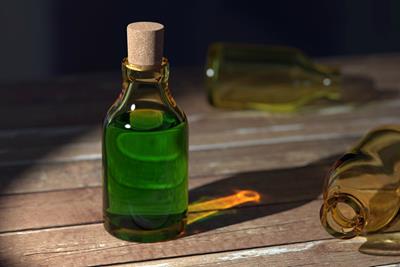
Tuesday December 26, 2017
 Education
Education
We know cannabis isn’t for everyone, but with what we know about customizable experiences alongside its multitude of consumption modes, the plant sure is giving it a good try. There are patches and lotions, edibles and concentrates, vaporizers and bongs, dab rigs and fancy joints and…the point is, there are a lot of ways a person can reap the benefits of some good ol’ Mary Jane. But perhaps the most beneficial mode of cannabis consumption is one we’ve been using for centuries already: cannabis tinctures.
What are Cannabis Tinctures?
Way back before cannabis prohibition, tinctures were the primary mode of consumption for medical cannabis and for good reason, too: tinctures are a great way to administer medicine in a hurry, and when stored properly, could last for many years.
Tinctures are made simply by absorbing cannabinoids or other herbal ingredients into a high-proof alcohol (usually Everclear), then straining out the plant matter. Tinctures can then be consumed by adding a desired amount to food and beverages, or simply by dropping a few milliliters under the tongue for more direct absorption.
It’s important to note that different modes of ingestion (specifically, metabolized versus sublingually absorbed) result in different potency and thus differing physiological outcomes.
For example, tinctures that are added to food and eaten must go through a lengthy digestion process before it can take effect while tinctures that are absorbed sublingually can bypass the whole process (and retain more valuable cannabinoids) by absorbing directly into the bloodstream. This article on edible cannabis bioavailability can help explain the process further.
Benefits of Cannabis Tinctures
Smoked cannabis offers relief in a matter of minutes, but can cause irritation on the lungs that, for many, can be hard to recover from. Edibles cause no lung irritation but can take hours to have an effect and even longer to wear off (which is especially problematic in cases of overconsumption). Hence the beauty of cannabis tinctures.

When ingested sublingually, cannabis tinctures can take effect in a matter of minutes (usually between 15 and 45) by absorbing directly into the bloodstream via mucus membranes and the multitude of capillaries therein. The process reduces the amount of time it takes for cannabinoids to take effect, and improves efficiency of cannabinoid absorption as well (meaning you’ll need less to feel its effects in the first place).
Dosing is also easier with tinctures, though it does begin with a bit of trial-and-error until the proper dose is established.
Simply add a single, 1 ml drop under the tongue or between the lip and gums, wait 15-30 minutes then re-dose as needed until the desired effects are reached.
Extended relief is easier to manage with tinctures, as well. For example, it’s much easier to dose discretely with a dropper bottle than it would be with a joint or vape pen and the effects last longer, as well – though typically not as long as metabolized cannabinoids.
Tinctures are Working Wonders in the Medical Community
Cannabis tinctures are especially promising for those in the medical community because of their excellent bioavailability, quick absorption rate and low irritation to body. Patients who suffer from nausea need not swallow a pill or eat an edible to gain relief, and those who may be sensitive to inhalation need not smoke it. Win-win.
Perhaps the most beneficial way cannabis tinctures help the medical community are in cases in which patients don’t have the physical capacity to ingest cannabinoids in other ways.
Epileptic patients may not be able to ingest cannabinoids during a seizure any other way, and dementia patients may be too confused to allow dosing in the first place. In other words, tinctures offer an easy solution to otherwise difficult dosing procedures.
Easy Ways to Make Your Own Cannabis Tinctures
Cannabis tinctures are easy to make at home using a few simple ingredients: decarboxylated cannabis, high-proof food-grade alcohol like Everclear, a mason jar or other sealable container, and time.
To make the tincture:
- Add the well-ground, decarboxylated cannabis into a jar
- Add your alcohol until the cannabis is covered
- Store it in a cool, dark corner somewhere for a few weeks, shaking the jar once each day to help the cannabinoids absorb
- Once the tincture starts to turn dark green, the cannabinoids have been absorbed and all plant matter can be strained from the alcohol
- After straining, simply add to an opaque dropper bottle and use as needed.
Some recipes omit the extended wait time, instructing you to add the ground, decarbed cannabis to the alcohol, shake vigorously for 3-5 minutes, then strain the plant matter out. The resulting solution will not have the deep green color that other tinctures have, but should be just as potent (though we cannot confirm this ourselves).
Cannabis tinctures have been used for centuries and will surely stick around for many more due to their ease of production, administration and absorption. If you’re curious about cannabis tinctures, we encourage you to make your own and share your results with us in the comment section below. Happy dosing!







